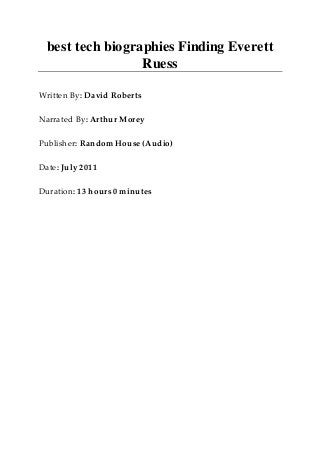
We never feel we get a handle on his complicated young man. So much of Everett is known, but more is a mystery. He sought to translate the vast and beautiful landscapes to Utah and Arizona into words and pictures a difficult task he often did successfully. He was a complicated young man, still growing and evolving as a person and artist. He was not always content with his wandering life. His dark moods were as predominant as his bright. He could be misanthropic, racist, and impatient. Most books about Ruess, even collections of his poems and letters, are cherry picked to find the most inspirational passages - sort of Thoreau meets Whitman. In the years to follow, he became a legend. Everett was seen by shepherds a week later, and then disappeared. This was one of the most isolated places in America. There were few true roads, and far less people or tourists than there are today. The land to the south of this town is rugged and unforgiving, and in the 1930s, it was even more isolated than today. In 1934, just before his 21 birthday, he set out from the town of Escalante, Utah, heading south.

Every season he would set out for this region, purchase two burros to carry his gear for extended forays in the desert wilds.

By the age of 17 he became enraptured by northern Arizona, and southern Utah. He kept diaries, wrote letters to his family and friends, painted watercolors and created woodblocks. At the age 16, Everett began to wander alone parts of California. Finding Everett Ruess: The Life and Unsolved Disappearance of a Legendary Wilderness Explorer by David Roberts is a biography of an unusual young man who he refused to live by the conventions of society in the early 1930s.


 0 kommentar(er)
0 kommentar(er)
